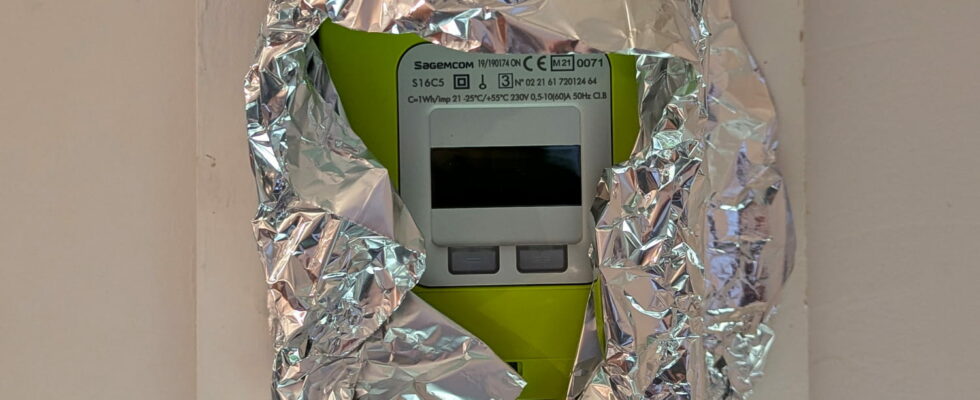On social networks, in particular on TikTok, videos recommending wrapping the Linky meter in aluminum foil. But what is this strange trick for?
Introduced in 2015, the Linky meter – the smart meter from Enedis, the manager of the electricity distribution network in France – today equips most homes in France. And if it has several advantages, starting with remote backup, which avoids the need for a technician to come to your home, it is also at the heart of many controversies and always causes a certain distrust among users.
Some people still think that the small hole at the bottom of the case hides a mini camera intended to spy on them, when it is a simple flashing LED indicating the consumption of watt hours in real time. Others imagine that it constantly sends information on the occupants of a household while it only transmits consumption once a day, between midnight and 6 a.m. But most fear the electromagnetic waves it continuously generates and which would be harmful to health, especially on electrosensitive people, causing headaches, dizziness or other problems.
It is precisely to protect yourself from these harmful waves that a tip has been circulating for some time on social networks, particularly on TikTok: it consists of wrapping the Linky meter in aluminum foil. These videos, which have accumulated tens of thousands of views, indeed state that this thin metallic film blocks the waves emitted by the Linky.
This so-called technique, however, is as useless as it is dangerous. Indeed, if the Linky does emit electromagnetic radiation, like all electrical devices, these waves are of a lower level than many everyday objects, whether it is a Wi-Fi box, telephones or even household appliances.
As stated a report from the National Agency for Food, Environmental and Occupational Health Safety (Anses), an in-depth study carried out in 2017 by the national frequency agency (ANFR) has proven that the values recorded are 25 times and 37 times lower than the regulatory limit values for electromagnetic fields. In addition, these are only maximum values, recorded only in the few minutes that the data transfer lasts, and at a very short distance (between 20 and 40 cm from the meter). Clearly, a barrier made of aluminum foil would not be of much use.
Above all, as Enedis reminds us, covering the Linky with aluminum foil can prevent its natural ventilation and lead to overheating with a power cut for safety reasons or, in the worst case, causing a fire. Not to mention the risk of electrocution with the surrounding electrical wires, aluminum foil being a conductor of electricity.
You will have understood, this popular technique is a bad idea. So be careful with so-called tips spread on social networks because, even if they seem harmless, they can sometimes turn out to be misleading and dangerous.
